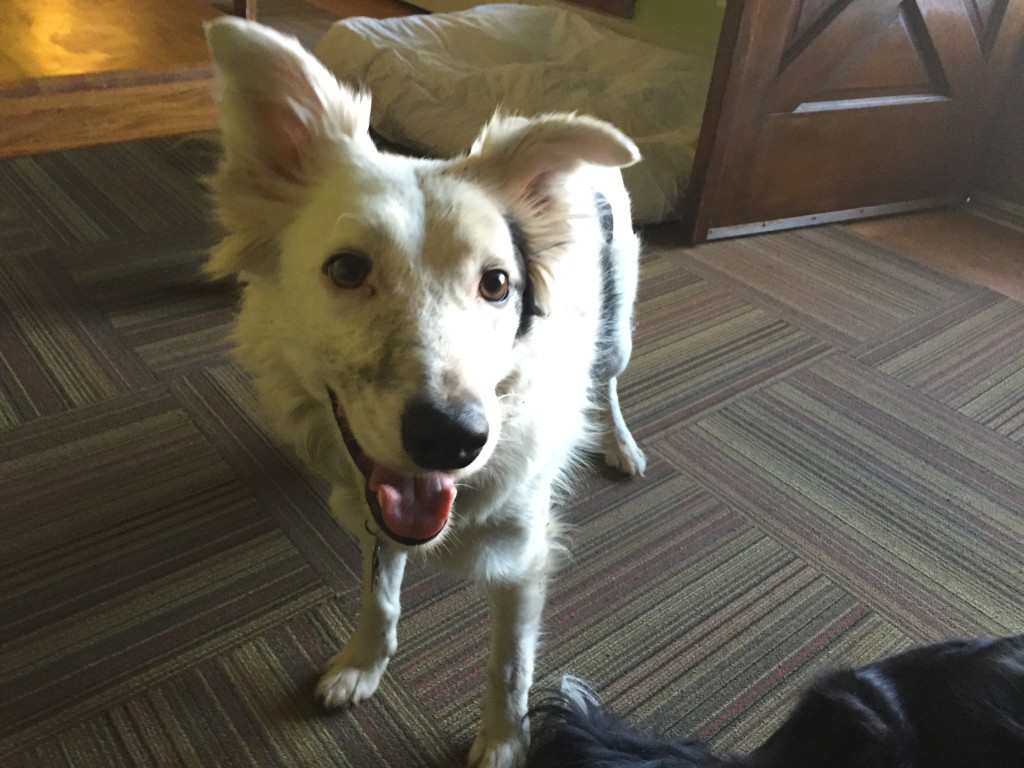We’ve had a pretty warm winter, but even with temperatures in the 70s it hadn’t felt like spring until this past week. The crocuses and grape hyacinths are blooming, my herbs are coming back to life (although we’ll have to see about the rosemary), and my garden is rapidly filling with grass and an invasive plant that masquerades as a flower but really wants to take over the world. Let the battle begin!
There’s an ongoing battle with my novel as well, but it’s a much more pleasant one than my yearly confrontations with the evil plant. And, of course, I know this will end as soon as I finish the book. 🙂 Right now I’m going over every scene and point of view shift to make sure they’re all working and necessary. That’s roughly fifty different pieces of the novel to review and evaluate. I haven’t done anything this detailed before, but this is also the first time I’ve written a story with four viewpoint characters. With Perfect Clarity had a few flashbacks, but the entire novel was written from one character’s point of view. That seems so easy now…
I have a spreadsheet where I’ve been recording a summary of each scene/point of view section (I’ll refer to them both as ‘scenes’ for simplicity), word count for each scene & each chapter, and viewpoint character. This helps me make sure I don’t have a bunch of short scenes and then one super long one, or have seven scenes in a row from the same character’s point of view (especially since there are four viewpoint characters in this story). I’ve added two things to this spreadsheet: scene cliffhanger and scene goals.
Not every scene has to have a cliffhanger, of course, but often they do – or if they don’t, it is sometimes easy to shuffle things around so that they do. I do my best to end all of my chapters with cliffhangers of some type, and try to do the same for scenes where that makes sense. In looking at the ‘goal’ of each scene I’m evaluating things like: Is a new fact revealed? Does the tension drop where it shouldn’t/too much/for too long? Is something revealed/discussed that is or could be handled better in a different scene? Is the scene too long/wordy?
For example, I have one scene in chapter four that I know is too long. It’s the first scene from the point of view of one of the two supporting characters (Katy). It’s important because I want the reader to understand her motivations, fears, etc. It achieves that goal very well, but right now it’s a little long and that diffuses the tension and emotional impact.
It would be nice if everything came out perfectly the first time, but it doesn’t. And even if you write something wonderful, that doesn’t mean it carries the story forward. When I was editing With Perfect Clarity I chopped out a chapter and a half in the middle of the book. This meant cutting a section I loved, and which my reviewers felt was well written. But the tension dropped significantly, and stayed low for too long, and even though something new was revealed it was something that was easily handled elsewhere. So I cut this section out. Fortunately by the time I got to that I’d learned how to be ruthless and look at what the story was – or wasn’t – achieving instead of focusing on how much I liked a piece.
Reviewing and evaluating everything feels like a humongous amount of work, and it is – but I believe it’s critical for making sure my story works. I’m about halfway through making my scene notes, then I’ll go through all of them and figure out what needs to be moved/removed/changed. Once that’s done the fun part – making those changes – will begin. 🙂


